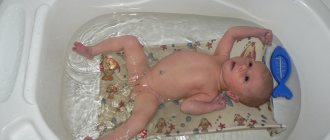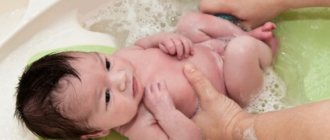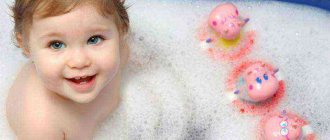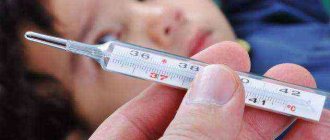Bathing a newborn is an exciting process for every new parent, which is not specifically taught in the maternity hospital. Pediatricians advise newborn children to carry out water procedures daily, but not all young mothers know how to bathe a baby. It’s good if there are older relatives nearby who can advise and help. If there is no such help, mothers have to cope alone. If you find out all the nuances of this procedure in advance, then your mother will be ready mentally and physically.
Mom bathes baby on her own
Difficulty swimming alone
Many young mothers do not know how to wash their newborn baby alone; they have several reasons for concern in this regard:
- They are afraid of the baby bath falling during washing.
- They are afraid that they won’t be able to hold the baby, that he might fall out and hit himself.
- They are worried that the water may quickly cool, causing the baby to get sick.
- They worry that they might need something during the process and there will be no one to give it to.
All this can be avoided if you are prepared in advance. The process of washing a baby is quite simple; over time, every mother does it faster and easier.
Bathing occurs according to an algorithm
Benefits of a bath for newborns
Slide for bathing newborns
Before birth, some parents wonder how it will be more convenient to bathe a newborn baby: in a special bath or in a general one? This question is always individual; each mother decides for herself how it will be more convenient for her to care for her child. There are advantages to purchasing a baby bath:
- Due to the size, it is easier to keep clean, because it is easier for parents to clean and maintain clean a small bathtub than a shared one.
- When using a bathtub, it is more convenient for the mother to hold the baby and monitor him.
- Children with an unhealed umbilical cord are bathed in boiled water. A small bath will be easier and faster to fill.
- If the baby has inflammation on the body, then the medicinal solution will be easier to prepare in a baby bath.
- Pediatricians do not give any contraindications against the use of baby baths.
Adding medicinal herbs to the bath
The use of chamomile, string, motherwort, and valerian is best discussed with your pediatrician. If a child is prone to allergies, atopic dermatitis and diaper rash are observed, then you should not use herbs. Also, they cannot be used until the navel is completely healed.
Adding medicinal plants to the bath is useful, but everything should be in moderation. You cannot prepare herbal baths every day, and it is also important to follow the dosage.
How to prepare a herbal decoction
- pour 3-4 tablespoons of dried herbs with 1 liter of boiling water;
- cover with a lid, leave to infuse for 1 hour;
- Before adding to water, strain through a sieve or cheesecloth.
How to choose the right time
Newborn bathing circle
The very first bath of newborns is not recommended to be too long, a few minutes is enough. Gradually increase this time to 15-20 minutes - it is considered optimal. Sometimes new mothers, not knowing when and how to properly bathe their baby, try to meet the deadline. If the child is calm, then water procedures can be extended.
At first, it is not necessary to bathe the baby every day, since he does not yet have time to get so dirty. Over time, when he learns to crawl and explore the world, mothers make washing the child a daily procedure.
Water procedures do not have to be carried out in the evening. Parents do this when it is convenient for them. Although carrying out water procedures before bed has a relaxing effect and promotes sound sleep. Pediatricians also advise starting water procedures shortly before feeding, so that the child is not yet hungry, but has not just eaten.
A special slide supports the head
How to bathe a baby correctly?
For bathing an infant, certain techniques are provided to make the procedure safe and enjoyable.
It is as follows:
- The baby’s body is completely immersed in water, leaving the head or only the face on the surface. You may notice that the chest and stomach float up if you do not regulate their immersion, that is, there is no danger that the baby will instantly go under water.
- There are three standard positions: bathing infants “lying on the back”, “lying on the stomach” and “sitting”. Moreover, in a large bathtub, a child is able to sit down with support already in the newborn period.
- You should hold the baby by the head: four fingers - under the back of the head, the little finger - under the neck. It is also permissible to place it on the crook of your elbow. If the baby is immersed stomach down, then his chin should be in the palm of his hand or between the thumb and index finger. There is no need to be afraid that water will fill your ears or splash into your eyes. The main thing is that this does not happen to the nose and mouth.
Komarovsky’s opinion on this matter
Baby screams while bathing: what to do?
Let's say the child was absolutely calm, but as soon as he plunged into the water, hysterics began. The bathing technique is not broken, but time after time everything ends in crying. How to fix it? Since all children are individual, the approach to solving the issue must be appropriate.
Let's try to change:
- feeding time - for example, not after the water procedure, but before it;
- time of the procedure, for example, from evening to mid-day or morning;
- water temperature - as a rule, the baby is cool and needs to be made warmer. Parents themselves decide at what temperature to bathe the child, but in reality there is a so-called “temperature contrast”: the baby lies wrapped up, warmed up, and then they carry him and lower him into water of about 25 degrees. Hence the emotion - a cry of protest due to discomfort. To make it different, it is recommended to come up with and carry out a certain ritual immediately before swimming. For example, undress the baby and walk your hands along the massage lines with the words: “Now we’ll go for a swim, warm water is waiting for us.” Cool the water itself gradually, after the baby has immersed himself in it. And, of course, use toys designed for playing in water.
Bathing a baby in a large bath
Only after the baby is in it will it be possible to appreciate all the benefits of such a water procedure and see with what ease the little one will begin to move, without the risk of being injured on the side, as in a small bath. And how many toys can fit here! So, how to bathe a baby in a large bathtub?
It's not difficult, although it does require some effort. Supporting the baby by the head while he lies on his back, you can move him in the water from side to side (from edge to edge) along a figure-of-eight trajectory, then turn him over on his stomach and make similar movements, changing their speed.
Usually such swimming is combined with diving. While the child is not sitting or walking, splashing around in a large bathtub is the only way to be active and throw out pent-up energy.
You need to remember that the water in the bathroom cools faster than in the bath: almost 2 degrees of heat is lost every 10 minutes. Therefore, during prolonged bathing, you should periodically add warm water.
Diving while swimming
A large bathtub is good because the baby can easily fit in it. So free that it is suitable not only for swimming, but also for diving. At the same time, it is not necessary to set the goal of teaching a child to swim, it is enough to allow him to get maximum pleasure.
Believe me, he won't choke! In extreme cases, he will cough and scream. At the same time, he sneezes out the dust that has accumulated in his lungs during the day. Let him calm down and he will continue swimming again.
Down with your own fears! And if you are still afraid, then it is better not to consider bathing your child in the bathtub as an alternative to rinsing in a baby bath.
In fact, there is nothing scary about diving. For example, due to a long previous exposure to an aquatic environment, newborns retain the fluid rejection reflex for two to three months after birth and are able to block its entry into the respiratory tract.
Over time, it fades away and requires development. But with regular diving while swimming in a large bathtub, the reflex can be preserved.
The only condition: consciously immerse the baby headlong with the word: “Dive!” Subsequently, upon hearing the command, he will involuntarily hold his breath and go under water for a few seconds.
Swimming for babies. How to bathe children correctly? Diving. Doctor Komarovsky
Preparing for a bath
How to teach your baby to sleep in his own crib
General tips for washing a newborn:
- To make it easier for mother, the baby bath is placed on special supports, then it will be at a comfortable level. Check that the stand does not wobble.
Note! Baby baths are pre-cleaned with soda and rinsed with boiling water. Any other cleaning substances may cause allergic reactions.
- Place all the things you need for swimming nearby so you don’t have to reach for them.
- Prepare a towel in which to wrap the baby after washing. To do this, spread it on a table or washing machine.
- Collect water and monitor the mark on the thermometer.
What you need for swimming at home
The baby's first bath will take a long time, so first you need to prepare the bath accessories that may be needed:
- Bath for bathing. For the first days of your baby's life, purchase a special baby bath. Before the procedure, wash it thoroughly using cleaning products intended for children. It is not recommended to spend the first bath in large adult bathtubs, otherwise the child will be scared.
- Thermometer for measuring water temperature. The first bathing of newborns must be carried out only at an optimal temperature of no more than 36°C. If the water is too hot, your baby may overheat.
- Soft mitten or washcloth. As a washcloth, you need to use a soft cloth, mitten, or sponge, which gently wipes the baby’s skin. It is strictly forbidden to use hard washcloths, as they can seriously damage the delicate skin of a newborn.
- Toys and soap. It is not necessary to take toys into the bath, but they can distract the baby, and bathing a newborn for the first time will be more relaxed.
- A clean and soft towel, hydrogen peroxide or brilliant green to treat the umbilical wound, a diaper, cotton swabs with a special limiter, clothing.
Bathing Essentials
The process of giving a newborn baby a bath as a single mom can seem daunting. But, if you analyze each moment step by step, then young mothers will not have any questions or concerns.
Items for a newborn to bathe:
- bath;
- bath stand;
- water thermometer;
- washcloth;
- towel;
- children's cosmetics or soap.
Features of bathing babies:
- If the baby’s mother bathes him on her own without outside help, it is recommended to use a hammock or a special slide. Many people also use circles for bathing. Their use allows you not to worry about the baby’s head slipping out. Mom has both hands free during the entire process.
Important! Sometimes a decoction of herbs is added to the water, but only as prescribed by a doctor. If there are no contraindications to this, then the decoctions are added to the water in advance.
- The baby is undressed and washed under running warm water. If there is no such need, immediately carefully place it in the bath on a slide. Rinse the entire body with warm water.
- Add a small drop of shampoo to a soft washcloth and wash all the folds on the body with it. Pediatricians do not recommend using shampoos too often, as they can dry out the skin - once a month is enough. If the child is washed without shampoo, the folds of the neck, arms and legs, armpits, and perineum should be washed with water.
- If the baby is not capricious during washing, he can be left to lie in the water for a while. At the end of the procedure, it is rinsed with clean water from a jug. The water is prepared in advance, so by the time of rinsing it has already cooled a couple of degrees. Pouring slightly cool water will be useful for the baby, but if the mother or the child does not like it, then the water in the jug is made warmer.
Prepare everything you need in advance
Features of bathing newborns
Water procedures are a very useful activity for all babies, starting from the first day after birth. The water environment is familiar and familiar to the baby, since he spent nine months in it while he was in his mother’s womb. Newborns feel very comfortable in water. Bathing is a hygienic procedure that is aimed at cleansing the child’s skin and hair of accumulated dirt.
Taking a bath every day promotes the proper physical development of the baby, contains an element of play, and therefore has a beneficial effect on the mental and psycho-emotional development of the child.
Should I bathe with an unhealed navel?
There is no clear answer to this question. Some pediatricians recommend starting to bathe a newborn, even if he has a clothespin on his navel, while others say that it is better to refrain from water procedures until the umbilical cord is completely dry. A well-known pediatrician and author of books on the health and education of children, Evgeniy Komarovsky, says that parents will have to decide whether or not to bathe a newborn in the first days on their own.
Please note! If the child is in good living conditions, does not sweat much, does not overheat, and does not get dirty, then nothing bad will happen to him if he is not bathed in the bathroom for one or two weeks. It won't bother him in any way. If parents are worried that the baby is uncomfortable, they can always wipe the problem areas and folds with wet wipes.
If parents decide to start bathing their newborn baby immediately after discharge from the hospital, then until the umbilical wound heals, this should be done with boiled water without using soap.
Important! Komarovsky does not recommend adding potassium permanganate to water, since it is completely useless in small doses and dangerous in large quantities. It is better to replace it with infusion of string.
Bathing a child with an unhealed navel
Is it possible to bathe a child with a runny nose?
If a runny nose is the only symptom, a ban on water procedures is not justified. On the contrary, a warm bath will help alleviate the child’s condition, you just need to follow some important rules:
- Make sure that the temperature of the water in the bath does not fall below +37-38°C;
- Avoid drafts; the air in the room should be slightly heated before bathing (to do this, you can add a small amount of hot water to the bath);
- If the baby is lying in the bath, then all parts of his body that are not immersed in water must be watered from time to time from a ladle. This is necessary in order to smooth out the difference between the upper and lower temperatures affecting the body;
- Immediately after taking a bath, in order to prevent hypothermia, the child must be dressed in warm pajamas or other suitable clothing;
- It is best for the baby to go to bed immediately after bathing;
- There is no need to wash your baby’s hair unnecessarily, as wet hair may make the runny nose worse;
- It is not necessary to carry out water procedures very often; once every two days will be sufficient;
- The optimal duration of bathing for rhinitis is 7-10 minutes.
Note! When the child is in the bathroom, his respiratory tract will be well moistened and warmed up, as during inhalation. This will reduce swelling of the mucous membrane and strengthen local immunity. If the baby looks lethargic, behaves capriciously, or has an elevated body temperature, then it is better to postpone bathing for a while.
Bathing a child in herbal infusion
How to choose the optimal water temperature
Newborns are bathed in boiled water until the navel heals, after which they can move on to regular tap water. The temperature is kept at 37°, but it is considered mandatory only for the first two weeks of life. Then mom can slightly increase or decrease the water temperature.
Gradual cooling of the water to 32° will have a general strengthening effect on the baby’s body, especially as a procedure before bedtime.
The temperature of the bathroom should be the same as in the rest of the house, above 21°. In order to bathe a child, there is no need to additionally heat the room, otherwise this may have a detrimental effect.
What to do after water procedures
The baby is taken out of the bath, holding the head, and immediately wrapped in a pre-prepared towel. Do not rub the newborn with a towel; you should carefully blot all the folds and the head several times. If necessary, clean the nose and ears.
When the child is dry, examine him for redness. For newborn girls and boys, special attention is paid to the groin area, since this is a place where irritation often occurs. It is avoided or neutralized with baby powder and cream.
It is not recommended to use creams and oils if the child’s skin is normal. Children's cosmetics should be handled carefully, using the principle: dry - moisturize, wet - dry.
How often can you bathe
There is simply no consensus among experts regarding this issue. In each specific case, it is necessary to make a decision individually. If splashing with water brings pleasure to the baby and his parents, then why not turn it into a nightly ritual? However, if a newborn is nervous, screams and arches, then there is no need to traumatize his psyche. You can get by with three baths a week.
Regarding the use of soaping agents, the opinion is more definite. You should use baby shampoo or soap as needed, but no more than twice a week. It’s better to reduce the amount of washing your hair with shampoo to once, because the sweat glands of a newborn are not yet so active.
To avoid dry skin, you should use special creams and lotions that are applied to clean and dry skin. Particular attention should be paid to the folds on the neck, near the groin and on the arms. It is acceptable to use diaper powder.
Causes of discomfort while swimming
While everything may be clear to mothers about the washing process, there are still frequent concerns about whether it is possible to wet the baby’s ears, and what if water gets into the unhealed navel.
If necessary, use cotton swabs with a limiter
Many parents try to avoid any water getting into their newborn's ears. But they do not take into account what structure their child now has. The ear apparatus is not yet fully formed, so water is less likely to get into the ear than in an adult. In addition, the use of special slides or circles will protect you from unnecessary worries.
It is normal for water to get into your ears while swimming. If parents are worried, they can insure themselves:
- blot with a towel;
- use a special children's cotton swab with a limiter;
- Wrap the baby in a towel with his head and gently turn him.
Washing the baby when the umbilical wound has not yet healed deserves special attention. Boiled water is used for the first 10-14 days or until the navel completely heals. After bathing, the umbilical wound is carefully treated in the following order:
- Mom spreads the skin around the umbilical wound with her left hand and drips a small amount of hydrogen peroxide inside.
- Use a gauze swab to remove peroxide, fallen off crusts and dry the wound.
- Using a cotton swab, treat the navel with brilliant green.
In some cases of umbilical cord inflammation or irritation, pediatricians recommend adding herbal infusions to baths. A preliminary consultation with a pediatrician is advisable.
Additional Information. If a mother bathes her baby for the first time, she should quickly wash, rinse and dry him. Crying will not benefit the procedure.
If your baby is capricious during water procedures, there are several reasons for this:
- most often the baby finds the water cold or hot;
- Bath time is not suitable for the child;
- the baby has a rash or diaper rash on his body;
- the child is hungry or has just eaten;
- the child is sick.
With proper preparation for all stages of bathing a child, a mother should not have any concerns about how to bathe a newborn alone. A pre-planned event will be beneficial for the child’s health, and over time it will become automatic. In addition, special baths, circles and other means will be good helpers for young mothers.
Bathing a child in a bath: is it acceptable?
Sooner or later, the time comes to let your newborn baby go for a “big swim”, and it’s time for a bath in the bath. This usually happens when parents confidently bathe their baby in a small bathtub, or the baby no longer fits in it. You can start bathing your baby in the bath immediately after the umbilical wound has healed. We advise parents to adhere to the following recommendations:
- Monitor the child's reaction. He may be frightened by the large space around him, because previously he was washed in the “chamber” setting of the bath.
- Use a lounger for safety and comfort.
- Stimulate the baby's activity and interest him in bathing toys: a device for blowing soap bubbles, rubber squeak toys, etc.
- Do not leave the baby unattended for a second, as even a water depth of 10-15 cm poses a danger to it.
Today there are many convenient and useful devices on sale: from thermometers and folding beds to protective visors for the head and organizers for toys. They will make the process of bathing both in the tub and in the tub enjoyable and safe for the baby and will give parents confidence that they are doing everything right.











